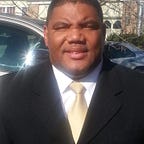Leadership Theory and the Culture of Ancient Egypt
The Trait Leadership or “Great Man” theory concluded that leaders were born with the characteristics of leadership typically as a result of exhibited technical knowledge and social skills, as well as behaviors of self-assurance, confidence, and charisma, that people believed could not be taught. The trait approach is consistent with this perception because it is built on the premise that experts are different, and their difference resides in the special traits they possess (Germain, M.L., 2012). The trait theory became ineffective as more challenging situations required other leadership qualities in decision-making and providing complex solutions.
General Colin Powell was an example of trait leadership because he professed that senior leaders had to work across boundaries of other organizations with equally influential people. These relationships will be with people who are not their subordinates, so they can’t be controlled or ordered (McAleer, G., 2003) and, though process skills were necessary to be highly functional in a hierarchical organization, leaders had to acquire the ability to change behaviors that people don’t acquire naturally.
The Behavioral Leadership theories considered the leader’s ability to change leadership styles that would address different situations and determined that leadership is learned, and not something you’re born with. These styles were based on points of focus where managers made decisions regarding the task requirements, needs of the employees, their direct compliance with directives, or employee input for the purpose of increased productivity. The type of work, environment, and people all determine which style can be used (Leadership.com, 2019).
Kenneth Frazier is an example of the behavioral leadership theory. Frazier joined the Merck pharmaceutical company as general counsel in 1992 and later became CEO in 2007 after leading its human health unit. Identifying the changing needs of the community for health improvement, coupled with the stresses of legal challenges of the organization and ensuring product safety to the customer, required Mr. Frazier to issue directives that would inspire managers to develop solutions at different levels. As CEO, Frazier directed the company to take financial risks in developing new treatments in prioritized research funding and placed special emphasis on improving treatments for Alzheimer’s disease.
The Situational Leadership model evolved the behavioral model, as well as combined it with the trait theory, by arguing that the attitudes of the leaders made the leadership style effective and not the ability to apply the right style to the situation. Readiness identifies a leader’s ability to sell, tell, participate, and delegate. Leaders must utilize selling when their followers are in fact unable to complete the tasks but are still ready and willing to and confident that they can do so (Wright, E.S., 2017). An effective situational leader must know the strengths and capabilities of personnel, along with the requirements of delegated tasks, in order to facilitate performance with minimal supervision. This level of proficiency will afford the time to focus on other leadership functions.
Michael Ord is the group chief executive for the Chemring Technology Group, PLLC. Chemring Group is a global business providing a range of advanced technology products and services to the aerospace, defense, and security markets. Michael Ord is an example of situational leadership because he has held several senior roles across air, land, and sea platforms, including Managing Director of the BAE Systems Naval Ships business and Managing Director of the BAE Systems F-35 Joint Strike Fighter business. Prior to his move into industry in 1996, Michael had a successful career in the Royal Navy (talent4boards, 2018). He had to know the strengths and capabilities of people and resources while leading in combat, manufacturing weaponry, and producing the material to weaponize the equipment. Each situation required a specific level of emotional intelligence because the risks were intense at every hierarchical level.
Germain, M.-L. (2012). Traits and skills theories as to the nexus between leadership and expertise: Reality or fallacy? Performance Improvement, 51(5), 32–39. https://doi.org/10.1002/pfi.21265
McAleer, G. (2003). Leaders in Transition: Advice From Colin Powell and Other Strategic Thinkers. Military Psychology (Taylor & Francis Ltd), 15(4), 309–322. https://doi.org/10.1207/S15327876MP1504_4
Discover Your Leadership Potential, Leadership.com 3019.
https://www.personalized-leadership.com/leadership-theories.html
Wright, E. S. (2017). Dialogic Development in the Situational Leadership Style. Performance Improvement, 56(9), 27–31. https://doi.org/10.1002/pfi.21733
“Chemring Group announces the upcoming appointment of Michael Ord to its Board of Directors as CEO”, talent4boards.com, May 2018.
